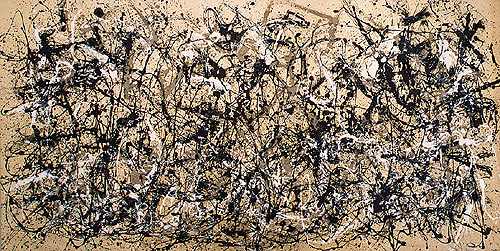
Ugh, Lee Rosenbaum’s op-ed in the LA Times is so wrong in so many ways, even Tyler Green can’t keep track of them all. She opines on the looming crisis facing museums [“Public collecting is endangered”!] who can’t buy any more art because it’s gotten too expensive:
It has always been hard for museums to compete with private collectors, but driven by the scarcity of great old works and an expanding class of wealthy buyers, the recent stratospheric rise of art prices has utterly outstripped most acquisitions budgets.
It’s hard to even refute her points because her data are so incomplete or contradictory; the only dire example she cites, $30 million/year for 45 departments at the Metropolitan Museum, are undermined by the Met’s dramatic, opportunistic purchase of a $44 million Duccio using “timely” donations. As if donors willing to hand over that much money on a single ask just fall into a museum director’s lap.
The risk museums face, Rosenbaum says, is that by not buying actively in the current contemporary market, they’ll wake up fifty years from now, unable to afford this generation’s Jackson Pollocks.
Had the Met followed that policy in 1957 [of not buying works from emerging or mid-career artists], it wouldn’t have made its landmark purchase of “Autumn Rhythm” (1950) by Jackson Pollock. Just try buying a comparable Pollock in today’s market, 50 years later, where one of his major works was reportedly sold by David Geffen for about $140 million
In fact, the Met’s Pollock acquisition is a perfect example of how ill-suited museums can be about collecting the work of contemporary and living artists. And the entry of iconic Pollocks into both the Met’s and the Modern’s collections show just how important trustee collectors have always been to building museum collections. The “crisis” Rosenbaum imagines now has existed almost from the founding of both these great American museums; they have almost always been too cheap, too slow, or too risk-averse to collect cutting-edge art, so instead, they collect collectors.
The Met bought Pollock’s Autumn Rhythm [top] in 1957, the year after Pollock’s death, and the year Frank O’Hara’s mid-career survey of the artist at the Modern was tragically transformed into a retrospective. The Met paid $30,000 for the painting to Sidney Janis, a collector and dealer who’d shown it several times over the years, without being able to sell it anywhere.
In fact, Alfred Barr, the director of the Modern, had turned down the painting when his trustee, Janis, had offered it for sale for just $8,000 a couple of years earlier. Barr was unable to raise the money from his acquisitions committee for the still-controversial New York School work. Barr had the chance after Pollock’s death, too, but balked again at the price, even though the work would be in the museum’s own reputation-sealing exhibition.
The Met bought Autumn Rhythm using, not funds for contemporary art per se, but an acquisitions endowment set up by a turn-of-the-century trustee, George A. Hearn, for the acquisition of living, American artists. For the Euro-loving founders of the Met, American art was barely an afterthought before Hearn donated a core group of 27 works to found the American department. The history of the Met, in fact, can almost be told through its own, repeated, institutional failures to recognize the important art of the time, and its reliance on prescient trustees or formative private collections to rectify the situation. American, Impressionist, Pacific/Oceanic, Photography, all these departments were founded with the donation of significant private collections. [the link above is to an answers.com copy of the Met’s wikipedia entry, which has mysteriously been cleansed of most critical accounts of its collecting history.

But back to Pollock and MoMA [where I should mention my longtime allegiances as a small-time fundraiser and supporter who most definitely does not write in any official capacity on these matters for the Museum. My knowledge comes from books by the likes of O’Hara, William Rubin, the art historian Irving Sandler, among many, many others, none of whom Ms. Rosenbaum seems familiar with, btw. Another good synthesis is “Selling American Art,” Christine Bianco’s 2000 MFA thesis at the University of Florida, which is a pdf here]:
Despite Janis’s decades-long association with the Museum, MoMA’s own iconic 1950 Pollock, One: Number 31, 1950 [above], only came into the collection in 1967, long after Barr had been replaced by William Rubin. Ironically, even at that point, Rubin had to raise the money to buy One from Janis by selling two paintings by Mondrian–two of five which Janis had donated in the first place. I say ironic because the other of Rosenbaum’s laments is that museums are “selling to buy,” deaccessioning works in order to buy other works.
Or to put it another way, had the Modern followed Rosenbaum’s ideal policy in 1967, it wouldn’t have made its landmark purchase of “One: Number 31, 1950” (1950) by Jackson Pollock. But hey, at least it’d have 45 Mondrians instead of the measly 43 it has now.
Finally, a cursory look at many of the labels of recent acquisitions at MoMA shows a credit to the Fund for the Twenty-First Century, which was established for the express purpose of buying current works by living, contemporary artists. In describing the Museum’s contemporary acquisitions approach during a gallery talk at a recent recent acquisitions show, co-curator Klaus Biesenbach mentioned the hope that even 50 of the 1,000-plus new works the Museum buys each year would stand the test of time. I don’t know what other museums would even want to collect at that pace or with those odds. The Guggenheim’s 2003 show of photography and video, “Moving Pictures,” was similarly put together almost entirely of new work entering the collection. So without even Googling for anything, there are at least two major institutions doing exactly what Rosenbaum claims they are unable to do.
And as for the museums who want to collect Pollocks now, nearly forty years after most of his most important works have already settled into other museums? If you find people to give you $140 million, you should probably see what they have hanging on their walls, and try to get that, too.
